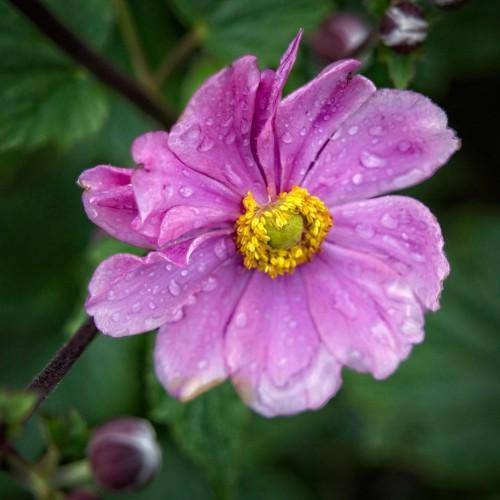
Japanese anemone
Anemone hupehensis var. japonica 'Prinz Heinrich'
Cycle:
Herbaceous Perennial
Watering:
Average
Hardiness Zone:
5 - 8
Flowers:
Flowers
Sun:
full sun,part shade
Leaf:
Yes
Growth Rate:
Low
Maintenance:
Low
Drought Tolerant:
Yes
Care Level:
Moderate
watering
Japanese anemone (Anemone hupehensis var. japonica 'Prinz Heinrich') should be watered consistently to keep the soil moist. Water the plant deeply once every 1 or 2 weeks during its active growing period, typically between late spring and mid-summer. In between waterings, make sure to check the top 1-2 inches of the soil for dryness. If the soil is dry, it is a good indication that the plant needs to be watered. Avoid overwatering, as Japanese anemone can be prone to root rot. Once the flowering is complete, reduce the amount of water given to the plant to help it go dormant. In the winter when the plant is dormant, you may choose to only water it occasionally.
sunlight
Japanese anemones prefer partial to full sun, especially in hotter climates. Morning sun is best, as the plant may become stressed in intense afternoon sun. The ideal amount of sunlight for the Japanese anemone is around 4-6 hours of direct sunlight per day. It performs poorly in shady conditions and without ample sunlight might lack vigor and fail to flower.
pruning
The Japanese anemone (Anemone hupehensis var. japonica 'Prinz Heinrich') should be pruned back each year after flowering, usually in early winter. Start pruning by removing individual dead or damaged stems down to the nearest healthy set of leaves. Cut back the dead stems as close to the ground as possible, but do not cut into healthy green foliage or stems. This will help to prevent damage and encourage strong new growth in the spring. Additionally, if any of the stems have become leggy, you can prune them back by 1/3 to 1/2 to create a more compact shape. Doing so will help to ensure vigorous growth and a better display of flowers the following season.
